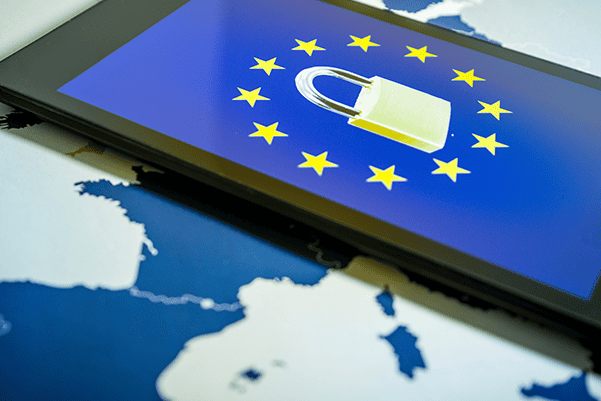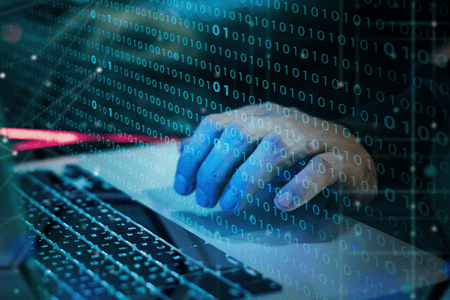
AI’s Double-Edged Sword: The Threat and Promise of Artificial Intelligence in Cybersecurity
Artificial Intelligence (AI) has rapidly evolved from a futuristic concept to an integral part of our daily lives. From automating mundane tasks to making complex predictions, AI holds immense potential. However, like any powerful tool, AI is a double-edged sword. On one side, it offers remarkable capabilities to enhance cybersecurity and protect against cyberthreats. On the other, it provides cybercriminals with sophisticated tools to exploit vulnerabilities. In this blog, we’ll explore both sides of AI in the context of cybersecurity and discuss why, despite its advancements, AI should not be solely trusted for critical business decisions such as data recovery.
The Dark Side: How Cybercriminals Use AI
1. Advanced phishing attacks
Cybercriminals are leveraging AI to craft highly personalized phishing attacks. By analyzing social media profiles, email correspondence, and other publicly available data, AI can generate convincing phishing emails that are difficult to distinguish from legitimate communication. These emails can trick even the most vigilant users into revealing sensitive information.
2. Automated vulnerability scanning
AI-powered tools can scan vast networks for vulnerabilities at an unprecedented speed. Once a weakness is identified, cybercriminals can exploit it before organizations have a chance to patch the flaw. This automation significantly reduces the time required for cybercriminals to identify and exploit vulnerabilities.
3. Deepfakes and social engineering
Deepfake technology, driven by AI, can create realistic audio and video content. Cybercriminals use deepfakes to impersonate CEOs or other high-ranking officials in organizations, convincing employees to transfer funds or disclose confidential information. This new form of social engineering is particularly challenging to combat due to its convincing nature.
The Bright Side: Using AI to Combat Cyber Threats
1. Threat detection and response
AI excels in identifying patterns and anomalies in large datasets. In cybersecurity, this capability is invaluable for detecting potential threats. AI-powered systems can analyze network traffic, user behavior, and system logs to identify suspicious activity in real time. By doing so, organizations can respond to threats more quickly and effectively.
2. Predictive analytics
AI can predict potential cyber threats by analyzing historical data and identifying trends. Predictive analytics allows organizations to anticipate attacks and take proactive measures to mitigate risks. This forward-looking approach can significantly enhance an organization’s cybersecurity posture.
3. Automated incident response
AI can automate certain aspects of incident response, such as isolating compromised systems or blocking malicious IP addresses. This automation can reduce the time it takes to respond to an incident, minimizing the potential damage. However, it’s essential to remember that human oversight is still necessary to make critical decisions during an incident.
A Balanced View: The Limitations and Ethical Considerations of AI
While AI offers numerous opportunities, it’s important to recognize its limitations. AI is not infallible and should not be solely relied upon for critical business decisions.
1. Lack of contextual understanding
AI systems, despite their advanced capabilities, lack the contextual understanding that human intelligence provides. Critical business decisions, such as when, how, and where to recover data, require a nuanced understanding of the organization’s priorities, regulatory requirements, and potential impacts. AI may not be equipped to make such decisions without human input.
2. Ethical and privacy concerns
The use of AI in cybersecurity raises ethical and privacy concerns. For example, while AI can monitor user behavior to detect anomalies, it can also infringe on privacy if not implemented responsibly. Organizations must balance the need for security with the need to protect individual privacy.
3. Dependency and trust
Over-reliance on AI can lead to complacency. Organizations may become dependent on AI systems and neglect the importance of human expertise and judgment. It’s crucial to maintain a balanced approach, leveraging AI for its strengths while ensuring that human intelligence remains at the core of decision-making processes.
Conclusion
AI is undeniably a powerful tool in the realm of cybersecurity, offering both significant opportunities and challenges. Cybercriminals are using AI to launch sophisticated attacks, but at the same time, AI is providing cybersecurity professionals with advanced tools to defend against these threats.
However, it’s essential to recognize the limitations of AI and not rely solely on it for critical business decisions. Human expertise, contextual understanding, and ethical considerations must remain central to any cybersecurity strategy.
At Hewlett Packard Enterprise (HPE), we believe in harnessing the power of AI while maintaining a balanced approach that prioritizes human intelligence and ethical practices. By combining the strengths of AI with the insights and judgment of cybersecurity professionals, we can build a resilient defense against the evolving landscape of cyber threats. Learn more here.
At Zerto, a Hewlett Packard Enterprise company, we can help you enhance your recovery capabilities to enable ransomware resilience or implement a Zerto Cyber Resilience Vault to cover the worst-case scenarios. Zerto has the expertise and technology to support your needs, so that you can ensure that your business is prepared for whatever threats may come your way. Get in touch to learn more.
 Chris Rogers
Chris Rogers


